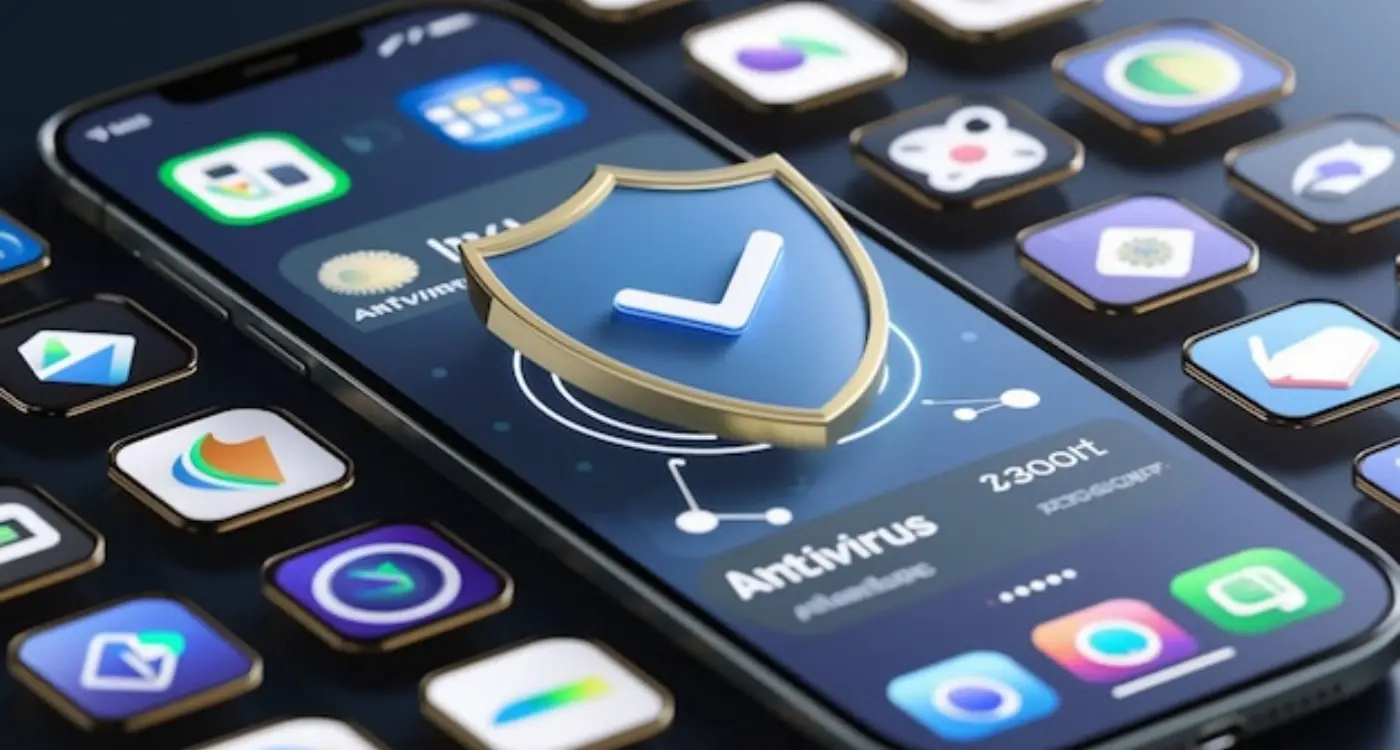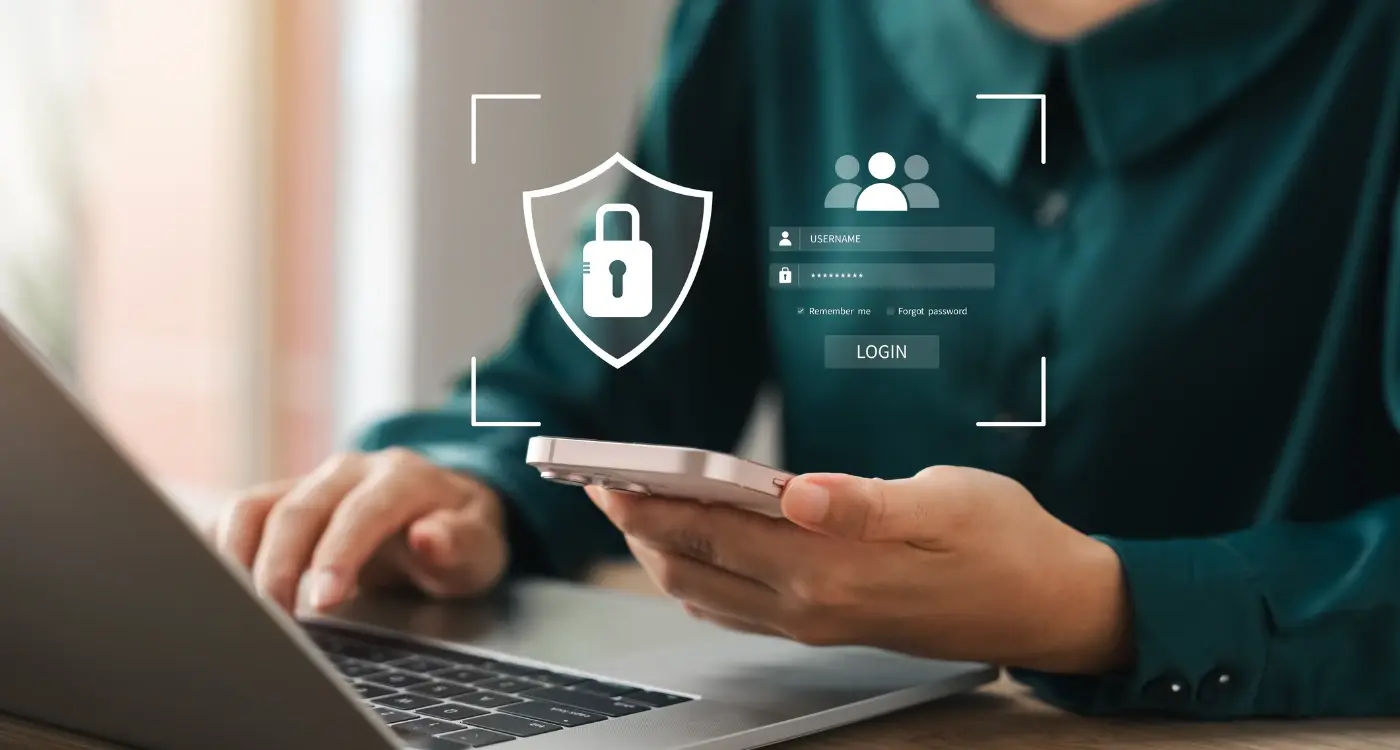What Security Measures Does My Business App Need?
Every single day, hackers launch over 4,000 cyber attacks on business applications—that's one attack every 22 seconds. Your company app isn't just a convenient tool for employees or customers; it's a potential gateway for cybercriminals to access your most sensitive data. Whether you're running a small consultancy or managing a large enterprise, mobile app security isn't something you can afford to overlook.
Business app security goes far beyond installing basic password protection. We're talking about comprehensive enterprise mobile security that covers everything from how user data gets stored to how your app communicates with external services. The stakes couldn't be higher—a single security breach can cost businesses millions in damages, regulatory fines, and lost customer trust.
Mobile security isn't just about protecting data; it's about protecting your entire business reputation and future growth potential
Throughout this guide, we'll walk you through the key security measures your business app needs to stay protected. From understanding common threats to implementing proper app data protection and meeting mobile app compliance requirements, you'll learn exactly what steps to take. By the end, you'll have a clear roadmap for securing your business app against today's most dangerous threats.
Understanding Basic App Security Threats
After years of building business apps, I can tell you that security threats are like uninvited guests—they show up when you least expect them and can cause serious damage. The good news is that most threats follow predictable patterns, which makes them easier to spot and stop.
Common Attack Methods
Data breaches happen when hackers find a way into your app's storage systems and steal customer information. This could be anything from email addresses to payment details. Malware attacks work differently—they involve nasty software that gets installed on users' phones, often disguised as legitimate updates or downloads.
Man-in-the-middle attacks are particularly sneaky. They happen when someone intercepts the data travelling between your app and your servers, a bit like someone reading your post before it reaches its destination. Public Wi-Fi networks are common hunting grounds for this type of attack.
Why Businesses Get Targeted
Business apps are attractive targets because they handle valuable information. Customer databases, financial records, and business communications are all gold mines for cybercriminals. The reality is that small businesses often get hit harder than large corporations because they typically have weaker security measures in place.
Understanding these threats is the first step towards building proper defences. For a deeper dive into the security nightmares that can affect your app, check out these real-world security incidents that highlight why enhanced security is crucial.
Authentication and User Access Controls
Right, let's talk about who gets into your business app and what they can do once they're inside. This is where authentication comes in—basically proving someone is who they say they are. Think username and password, but we've moved way beyond that now. Multi-factor authentication (MFA) is your best friend here; it adds extra layers like sending a code to someone's phone or using their fingerprint.
I've worked on plenty of enterprise mobile security projects where companies thought a simple password was enough. Spoiler alert: it wasn't! These days you need to consider biometric authentication, single sign-on (SSO) integration, and role-based access controls. That last one means your marketing team can't accidentally access the finance data—which trust me, has happened more times than I care to remember.
Setting Up User Permissions
Once someone's authenticated, you need to control what they can actually do. This is where role-based permissions shine. Your sales team needs different access than your executives, and your app should reflect that. Set up user groups, define what each role can see and edit, and regularly review these permissions—people change jobs, remember!
Always implement session timeouts for your business app. If someone leaves their phone unlocked, you don't want sensitive company data accessible for hours. A 15-30 minute timeout strikes the right balance between security and usability. For more comprehensive password policies, explore these essential security policies that ensure users create safer passwords.
Data Encryption and Storage Protection
Think of your app's data like a diary full of secrets—you wouldn't want just anyone reading it, would you? That's exactly why we need to protect the information your business app collects and stores. Every time someone logs in, makes a purchase, or enters their details, that data needs proper protection.
Encryption: Your Digital Lock and Key
Encryption scrambles your data so it looks like gibberish to anyone who shouldn't see it. When your app sends information from a user's phone to your servers, it should be encrypted during the journey—we call this encryption in transit. Once that data reaches your servers, it needs to stay encrypted while it's stored there too; that's encryption at rest.
I've worked with businesses who thought their basic password protection was enough, but it really isn't. Modern encryption uses complex mathematical codes that would take hackers thousands of years to crack. The most common standard is AES-256 encryption, which is what banks and government agencies use.
Safe Storage Practices
Where you store data matters just as much as how you protect it. Cloud services like AWS or Google Cloud offer built-in security features, but you still need to configure them properly. Never store sensitive information like passwords or credit card details in plain text—always encrypt first, then store. Regular backups are smart too, but make sure those backups are encrypted as well. Business apps have unique security requirements that differ significantly from consumer applications.
Network Security and API Protection
Right, let's talk about the invisible highways your business app uses to send data back and forth. When your app talks to servers or other services, it's not just shouting information into the void—it's having conversations through something called APIs (Application Programming Interfaces). Think of these as the postal service for your app's data, and just like real post, you want to make sure nobody's intercepting your letters.
Securing Your Data in Transit
The moment your app sends information across the internet, it becomes vulnerable. Hackers can sit between your app and your servers, snooping on everything that passes through. That's why we use HTTPS encryption for all communications—it scrambles your data so even if someone catches it, they can't read it. I always tell clients this is non-negotiable; there's simply no excuse for sending sensitive business data over unencrypted connections.
The weakest link in your security chain is often the communication between your app and your servers—protect it like your business depends on it, because it does
API Authentication and Rate Limiting
Your APIs need bouncers at the door. API keys, tokens, and proper authentication stop unauthorised access to your backend systems. Rate limiting prevents attackers from overwhelming your servers with requests. Without these protections, your business app becomes an open door to your most sensitive data and systems.
Compliance Requirements for Business Apps
If you're building a business app, you can't just focus on making it work well—you need to follow the rules too. Different industries have different laws about how apps must handle data and protect users. Getting this wrong isn't just embarrassing; it can cost you serious money in fines.
GDPR affects any app that handles data from people in Europe, even if your business is based elsewhere. This means getting clear permission before collecting personal information and letting users delete their data when they ask. You'll also need to report any data breaches within 72 hours—something that catches many businesses off guard. For a comprehensive breakdown of what compliance truly entails, explore our guide on enterprise app security compliance requirements.
Industry-Specific Rules
Some sectors have extra requirements on top of general data protection laws. Healthcare apps must follow HIPAA in America, whilst financial apps need to meet PCI DSS standards for payment processing. Educational apps often fall under COPPA rules when they involve children under 13.
- Healthcare: HIPAA compliance for patient data
- Finance: PCI DSS for payment processing
- Education: COPPA for children's privacy
- General business: GDPR for European users
Planning for Compliance
Start thinking about compliance requirements during the planning phase, not after your app is built. Document what data you collect, where you store it, and who has access to it. This paperwork might seem boring, but it's what regulators want to see if they come knocking at your door.
Security Testing and Vulnerability Management
Testing your business app security isn't something you do once and forget about—it's an ongoing process that needs to happen throughout development and after launch. I've seen too many companies treat security testing as a box-ticking exercise, only to discover major vulnerabilities months later when it's far more expensive to fix them.
There are several types of security testing your enterprise mobile security strategy should include. Static testing examines your code without running it, looking for common security flaws. Dynamic testing runs your app and tries to break it in real-time. Penetration testing goes further—security experts actively try to hack your app using the same methods real attackers would use.
Set up automated security scanning in your development pipeline so every code change gets checked for vulnerabilities before it goes live. For practical steps on implementing these measures, read our comprehensive guide on ensuring your app remains secure.
Types of Security Testing
- Static Application Security Testing (SAST) - scans source code
- Dynamic Application Security Testing (DAST) - tests running applications
- Interactive Application Security Testing (IAST) - combines both approaches
- Penetration testing - simulated real-world attacks
- Mobile-specific testing - checks device permissions and data storage
Vulnerability management means having a clear process for what happens when security issues are found. You need to classify threats by severity, assign responsibility for fixes, and track progress. Mobile app compliance often requires documented evidence of your security testing processes, so keep detailed records of what you test and when.
Conclusion
Building a secure business app isn't something you can tick off a list and forget about—it's an ongoing commitment that needs attention throughout your app's entire life. I've seen too many businesses launch apps thinking they've covered all their bases, only to discover gaps in their security months later when it's much more expensive to fix.
The threats we've covered aren't going anywhere; if anything, they're getting more sophisticated. But here's the thing—you don't need to be a security expert to get this right. You just need to understand the basics and work with people who know what they're doing. Start with strong authentication, encrypt your data properly, secure your APIs, and test regularly. These aren't nice-to-haves anymore; they're the minimum standard for any business app.
What surprises me most is how many businesses still see security as an afterthought or an unnecessary expense. The reality is that a security breach will cost you far more than implementing proper security from the start—both financially and in terms of your reputation. Your users trust you with their data, and that trust takes years to build but only seconds to destroy. Get the security right from day one, and you'll sleep much better at night.
Share this
Subscribe To Our Learning Centre
You May Also Like
These Related Guides

What Makes App Security Frameworks Enterprise-Ready?

How Can I Build Bulletproof Enterprise App Security?



